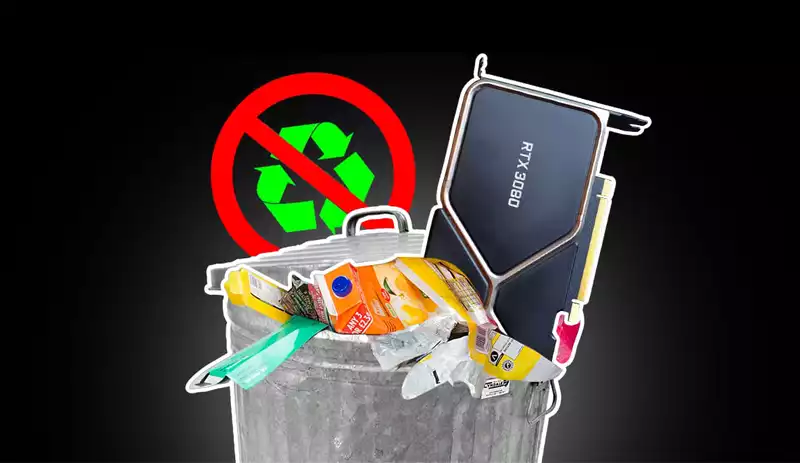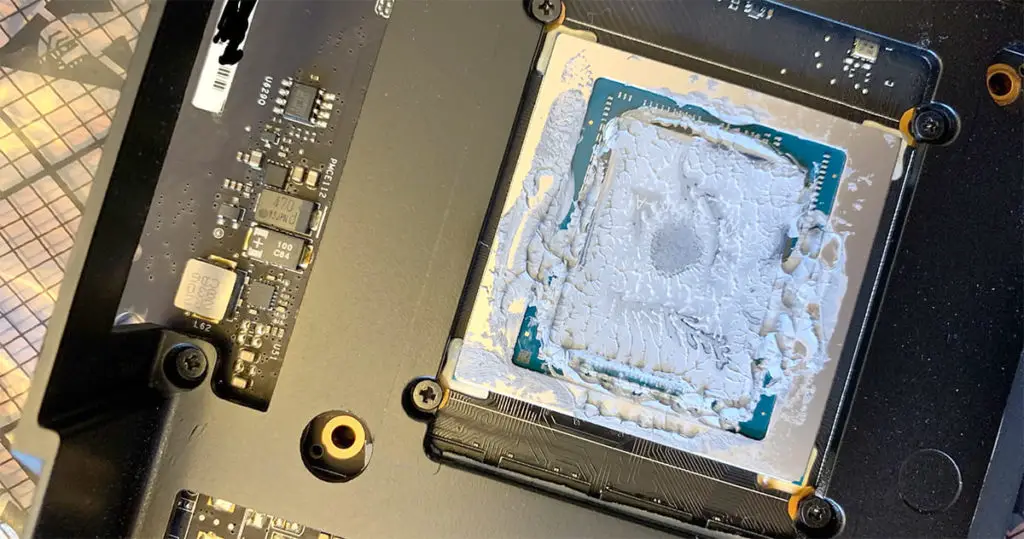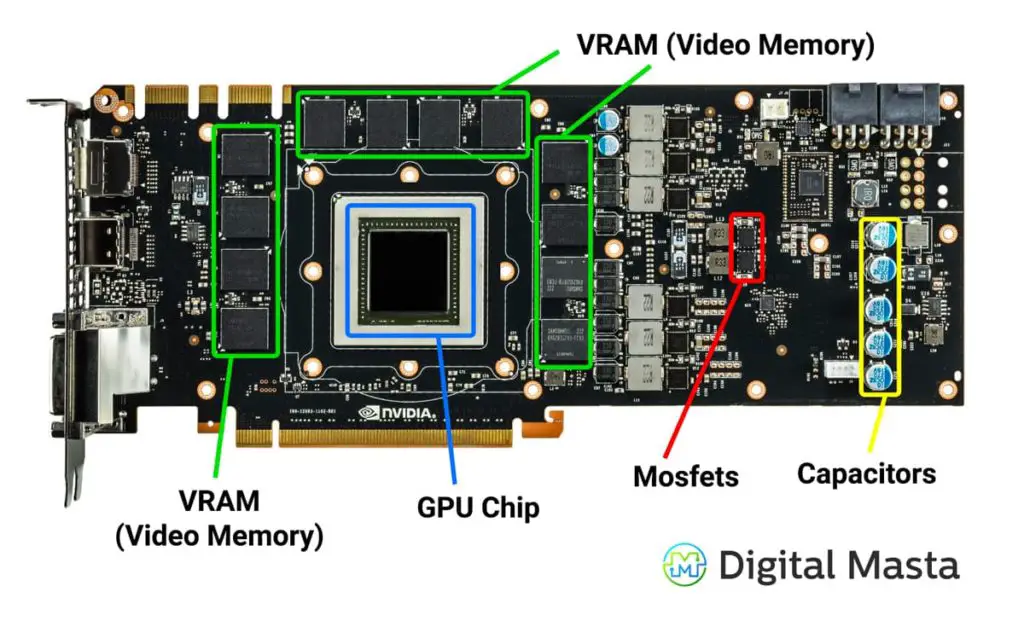You can also be interested in these:
- All About the Ada Lovelace Architecture technology of the GeForce RTX 40 Series
- Nvidia RTX 3090 vs RTX 3090 Ti: The not-so-obvious conclusion
- What is the PS5 GPU equivalent to? Spoiler alert: It’s amazing
- What is the AMD FidelityFX Super Resolution?
A graphics card is one of the most expensive purchases one commits to when assembling your computer rig. There are dozens of options depending on the motherboard you chose, ranging considerably in quality, performance and of course, price. If someone told you that graphics card is going to last the next 7 years, wouldn’t you consider investing a little more money into one that’s really worth it? How long does a graphics card last in reality?

Knowing how long a graphics card lasts is essential when buying a new one. Simply because it tells us how long we can take advantage of our investment. Many people would spend $800 USD on their graphics card if it were to last 3 or 4 years, but for only 1 or 2 years of use, that investment is not longer fair. In this article, we will answer this question.
Simply put, the longest referenced time for how long a graphics card lasts ranges between the 6 to 8 years mark having full support of the manufacturer since its launch. This doesn’t mean you cannot still use it past this time, although there are a couple of factors that will make you reconsider the fact of lasting so long with your graphics card.
When the graphics card becomes obsolete, is it something caused by the manufacturer?
There are two ways that we “put an end” to our graphics card without really wanting to: either it breaks, or it becomes obsolete. In this article, we will determine how long a graphics card lasts with both issues in mind, and we will start by focusing on obsolescence.
Does “planned obsolescence” apply to graphic cards?
The planned obsolescence of graphics cards is more a myth than reality. You’ve probably heard that AMD or NVIDIA introduce driver updates that intentionally reduce gaming performance on older graphics cards.
In reality, there is little, if any, evidence that this is so. As much as very isolated cases can be demonstrated, there is usually an explanation for the lack of performance. There is simply no systematic tendency to intentionally reduce the performance of older GPUs via drivers. Let’s cross that off our list.
Also, in the case that it is true, you could always download an older version of the drivers. In fact, we highly recommend it if an update reduces or frustrates the performance of a title you play. We don’t say this because we acknowledge there is an evil plan to introduce programmed obsolescence, but because there are other factors that could happen.
At the end of the day, what represents optimization for one brand of graphics card could be the complete opposite for another. It is understandable that manufacturers focus on the latest GPUs for these updates, but it is certainly not something to worry about.
Perhaps you should worry more about how long drivers are going to be provided, hence, how long the maximum support of a graphics card lasts. Let’s see which are the oldest GPUs that AMD and NVIDIA, as of September 2021, are supporting:
- AMD supports all its RX graphics, that is, since approximately 2016. The immediately previous GPUs, R9 300, have “legacy drivers”.
- In NVIDIA’s case, it all goes back to Maxwell GPUs. These are the GTX 900, launched since 2014, and the GTX 750 or 750 Ti. These last two correspond to an older generation (Kepler) by nomenclature, but are actually Maxwells.
But beware, the fact that there are no updated drivers does not mean that the GPUs cannot be used. Older drivers are still available. But of course, they could have problems in new games.
Perceived obsolescence, this does determine how long a graphics card lasts
As we have already touched on, It makes no sense in assuming there is a “planned obsolescence” in the graphics card world, since manufacturers give many years of support (up to 6 or more) to their products, and don’t “limit” them intentionally.
But what can be a real issue and is almost certain to happen is perceived obsolescence. This refers to the fact that we begin to perceive that our graphics card is not up to our needs. This phenomenon can happen for several reasons:
- The release of a new video game with a lot of hype, and seeing in the recommended technical specs, your graphics card doesn’t appear on the list. This will make you believe your card won’t perform good enough with it.
- Have the user switch to a higher screen resolution. This demands more graphics power and therefore a new card.
- There may also be higher demands on performance. For instance, trends that affect our perception, like the FPS metrics and gamers (lately there is a growing demand for 144 Hz monitors), or greater graphic detail.
- GPU performance drops over the years. Can this happen? Yes, especially if we do not do maintenance by cleaning the thermal paste from the graphics card and cleaning its heatsink. It will end up having higher temperatures, limiting performance.

Without a doubt, at this point it all comes down to the needs of the user. How long does a graphics card last for someone who always wants to play the latest titles at very high quality? Well, it can be a matter of only 2 or 3 years. And for someone who prefers more modest games, like eSports, or who doesn’t play quite often? Here, we can confidently say more than 4 years, perhaps even reaching 7 or 8.
In general, the duration of a graphics card until the user feels a certain perceived obsolescence is between 3 and 5 years. Thinking about it: One GPU that is still heavily used is the GTX 1060, which is over 5 years old at the time of this writing.
Other cases of old GPU generations still performing well until date are the 1070, 1080 or 1080 Ti. Sure thing, they can still modestly serve their purpose well, but for many people they fall short in performance.
Can a graphics card last less because its internal components break?
So far we’ve talked about potential graphics card performance issues. But what happens if the hardware itself breaks down? How long can its internal components last?
Let’s distinguish some internals of the graphics card, to see if there is any chance that they will fail.

The graphics chip itself can last for many, many years, even more than 10, without any problem. The only exception is excessive overclocking that causes electromigration, in which case its durability would be shortened. However this is not that common.
- In your voltage regulation module (VRM), the critical component is probably the Mosfets. These components are rated for a high durability and long-lasting life span, they can even exceed a million hours at high temperatures. Therefore, this is not a matter of concern unless there is a design problem in that particular GPU model.
- In addition to Mosfets, there might be problems with the capacitors. Any GPU today uses solid capacitors, and in many cases Japanese capacitors that will last for hundreds of thousands of hours of use.
- One of the weakest chain links in the components list prone to failure is the fan. Due to quality issues or durability, fans can begin to fail even after 3 years. But they can be replaced without too many complications, plus when they start to fail they will let you know there is a problem by becoming a lot more noisy. Nonetheless, even when failling, they can last until completely spoiled.
- Finally, another point of concern is in regards to the smallest internal components, such as the tiny SMD resistors or capacitors. Sometimes they fail, due to continued overheating or poor design, but we don’t believe you should be worried by these in the first 10 years of use of the graphics card.
In short, when it comes to electronic components it is a matter of luck. In the overwhelmingly majority of cases everything depends on the obsolescence perceived by the user.
Conclusions on how long a graphics card lasts
At the end of our analysis, it seems reasonable to say that a graphics card lasts between 3 and 5 years for an average user. The point is that, almost always, the user will end up replacing the graphics card due to perceived obsolescence, maybe because he doesn’t feel there is more juice to squeeze from that GPU.
The duration of a graphics card (until it fails completely) is, in most cases, longer than the time the user wants to have it. The only major exceptions are breakages due to a faulty product or simply “bad luck” with the electronics.
When do I know I am being a victim of “perceived obsolescence”? Basically, when the performance the games that interest you the most is no longer up to your expectations. Either because your expectations are higher or because you play more demanding titles. We must even consider the case of consumerism in which it is more a psychological influence that drives us in mysterious ways.
Now let’s stretch this exercise to its limits. Here are two extreme cases and an “average” case of the duration of a graphics card:
- User who buys a GPU adapted to his needs, but after a few months he uses much more demanding games, increases the resolution, the refresh rate and the graphic demands. Consequently, the GPU he bought may not last a year because it was too low-end for his new needs.
- User who buys a graphic at the level of his demands, and manages to “squeeze” its use for up to 5 years, and then change PC or GPU, for example because it begins to lose driver support.
- As a last example, someone who has a graphics card with outstanding performance and always plays less demanding titles. You could spend 10 years with the graphics without any problem!
More stories like this
- All About the Ada Lovelace Architecture technology of the GeForce RTX 40 Series
- Nvidia RTX 3090 vs RTX 3090 Ti: The not-so-obvious conclusion
- What is the PS5 GPU equivalent to? Spoiler alert: It’s amazing
- What is the AMD FidelityFX Super Resolution?
- Is it ok to put cheap thermal paste on your CPU?
- Frametime vs FPS: What’s the best game performance metric